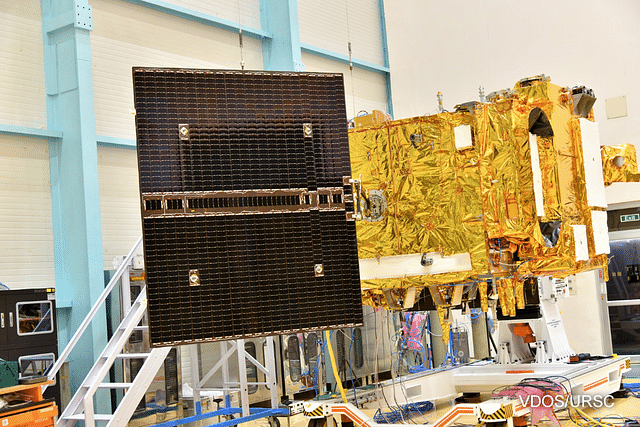Science
ISRO Prepares For Launch Of Aditya-L1, India's First Space-Based Sun Observatory

Aditya-L1 spacecraft at Sriharikota (Photo: ISRO/X)
India's first space-based Indian mission to study the Sun is nearing lift-off.
In an X post (formerly a 'tweet'), Indian Space Research Organisation (ISRO) said Monday (14 August) that the Aditya-L1 satellite has arrived at the Satish Dhawan Space Centre-Sriharikota Range (SDSC-SHAR), Sriharikota.
The Aditya-L1 mission is getting ready for the launch, ISRO said. The spacecraft will be launched using a polar satellite launch vehicle (PSLV) on the workhorse rocket's next mission, PSLV-C57.
The launch is expected to take place either at the end of August or in early September, as teased by ISRO Chairman S Somanath soon after the successful launch of the PSLV-C56 mission, which deployed seven Singapore satellites in intended orbit on Sunday (30 July).
India's solar spacecraft will be placed in a halo orbit around the Lagrange point 1 (L1) of the Sun-Earth system. This point is located approximately 1.5 million km from Earth.
By positioning the satellite in this orbit, Aditya-L1 will have the significant advantage of continuously observing the Sun without any occultation or eclipses. This will enable real-time monitoring of solar activities and their impact on space weather.
Aditya-L1 is equipped with seven payloads designed to observe different layers of the Sun, including the photosphere, chromosphere, and corona. These payloads will use electromagnetic as well as particle and magnetic field detectors.
Four of the payloads on the spacecraft will have a direct view of the Sun from the special vantage point L1. The other three payloads will conduct in-situ studies of particles and fields at L1, providing valuable scientific data on the propagation of solar dynamics in the interplanetary medium.
The scientific instruments on Aditya-L1 are expected to provide crucial information for understanding various phenomena related to the Sun, such as coronal heating, coronal mass ejections, pre-flare and flare activities, dynamics of space weather, and the propagation of particles and fields.
The Aditya-L1 satellite was assembled and integrated at the U R Rao Satellite Centre (URSC), Bengaluru.
(Pictures of Aditya-L1 at Sriharikota here.)
Support Swarajya's 50 Ground Reports Project & Sponsor A Story
Every general election Swarajya does a 50 ground reports project.
Aimed only at serious readers and those who appreciate the nuances of political undercurrents, the project provides a sense of India's electoral landscape. As you know, these reports are produced after considerable investment of travel, time and effort on the ground.
This time too we've kicked off the project in style and have covered over 30 constituencies already. If you're someone who appreciates such work and have enjoyed our coverage please consider sponsoring a ground report for just Rs 2999 to Rs 19,999 - it goes a long way in helping us produce more quality reportage.
You can also back this project by becoming a subscriber for as little as Rs 999 - so do click on this links and choose a plan that suits you and back us.
Click below to contribute.
Latest